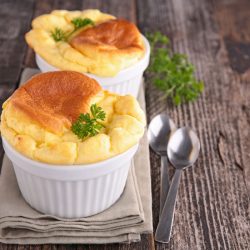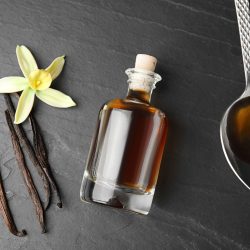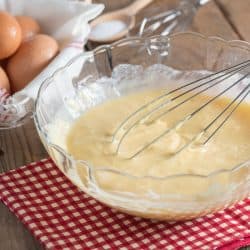Finding new recipes can be exciting and confusing all at the same time. Do you want to try making souffle pancakes for breakfast but don't know why they always seem to taste like eggs? Is it normal for this breakfast recipe to always end up eggy?
Well, we've done some research and have the answer for you. Let's dive in!
No. Your souffle pancakes shouldn't usually taste like eggs. So, if yours always seem to have an eggy taste, you could be using too many in your recipe.
Since most souffle pancake recipes call for 1-2 egg yolks and 2-3 egg whites, we recommend sticking to those instructions. If you still taste eggs, you might want to use even fewer for your pancakes, so this may take some trial and error.
As we start this post, we will cover all things souffle pancakes and discuss why yours always taste eggy. Whether you're a new chef or consider yourself a pro, we're here to offer some guidance. With that said, let's get right into this topic below!
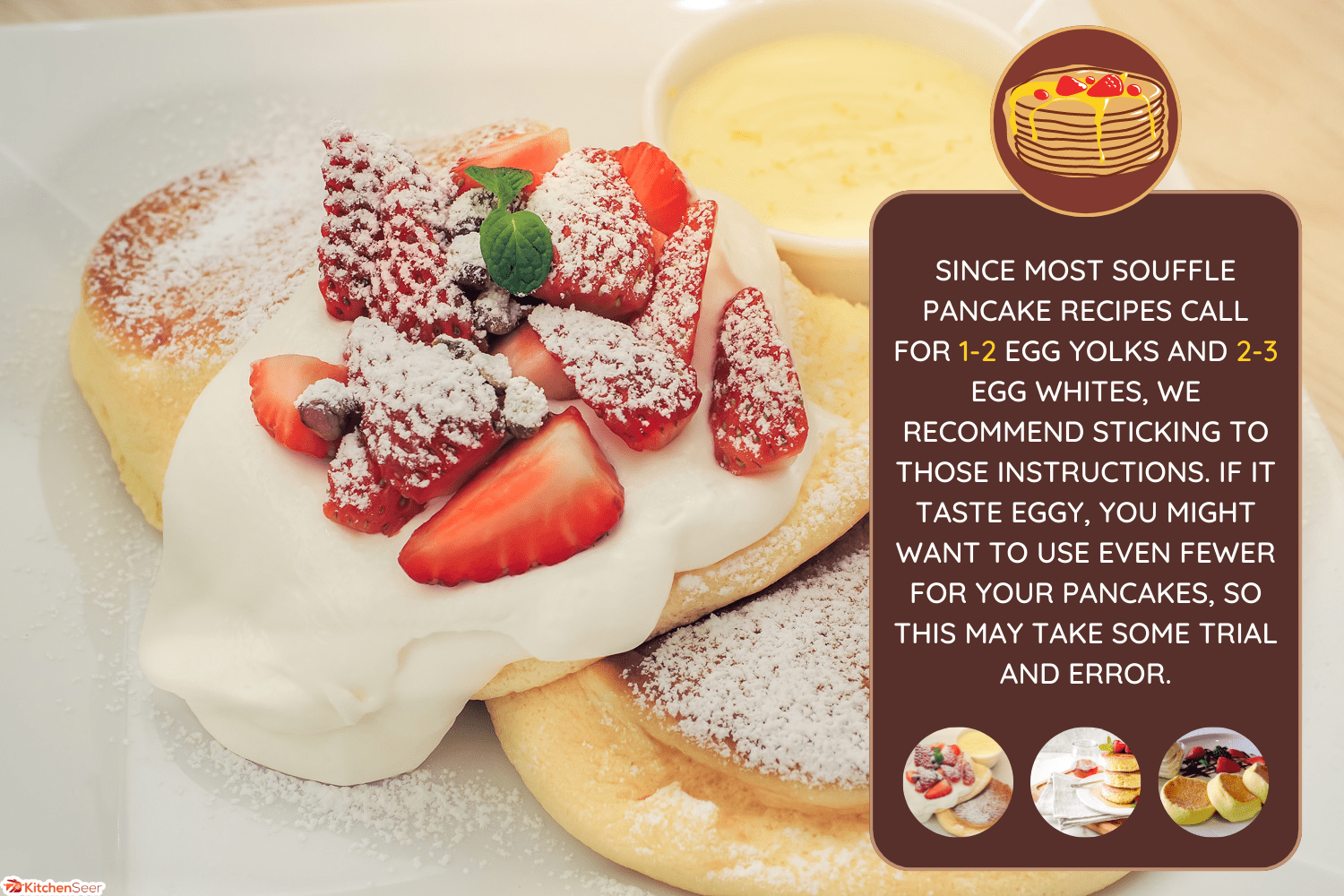
Why Do My Souffle Pancakes Taste Like Eggs?
One of the main reasons your souffle pancakes taste like eggs is that you used too many for your recipe.
As we said, most recipes for souffle pancakes don't require more than 1-2 egg yolks and between two and three egg whites, so you don't need many.
Therefore, if you add in one or two extra yolks or whites, your pancakes can start tasting a bit eggier than normal. Eggs, although yummy when scrambled, aren't always as exciting when you're trying to enjoy fluffy souffle pancakes.
Your souffle pancakes should taste sweet, so if you're getting a more eggy or salty flavor, we recommend adjusting your recipe.
Some cooking experts even add extra vanilla flavoring while preparing their souffle pancakes to prevent the dreaded egg taste. Every chef is different, so find what works for you.
How Do I Make Souffle Pancakes Taste Less Eggy?
If your souffle pancakes have a super eggy taste, your egg-to-batter ratio is too high. As we said above, souffle pancakes need to taste sweet when they're done.
So, an easy way to make yours taste better and less eggy would be adding vanilla flavoring to your mix. According to cooking pros, you can achieve a sweeter souffle by adding around ¼ tsp more vanilla.
Another way to get rid of an eggy souffle taste is to sprinkle a pinch of salt on the egg yolks. Doing this will get rid of that strong egg flavor, ultimately helping your sweeter ingredients stand out.
Although adding salt may feel redundant, it can work alongside your vanilla or sweeter flavoring to mask the taste of eggs and give your souffle a more pleasing final taste.
Of course, you don't need to go overboard with any of your ingredients, so follow your recipe as closely as possible.
What Should Souffle Pancakes Taste Like?
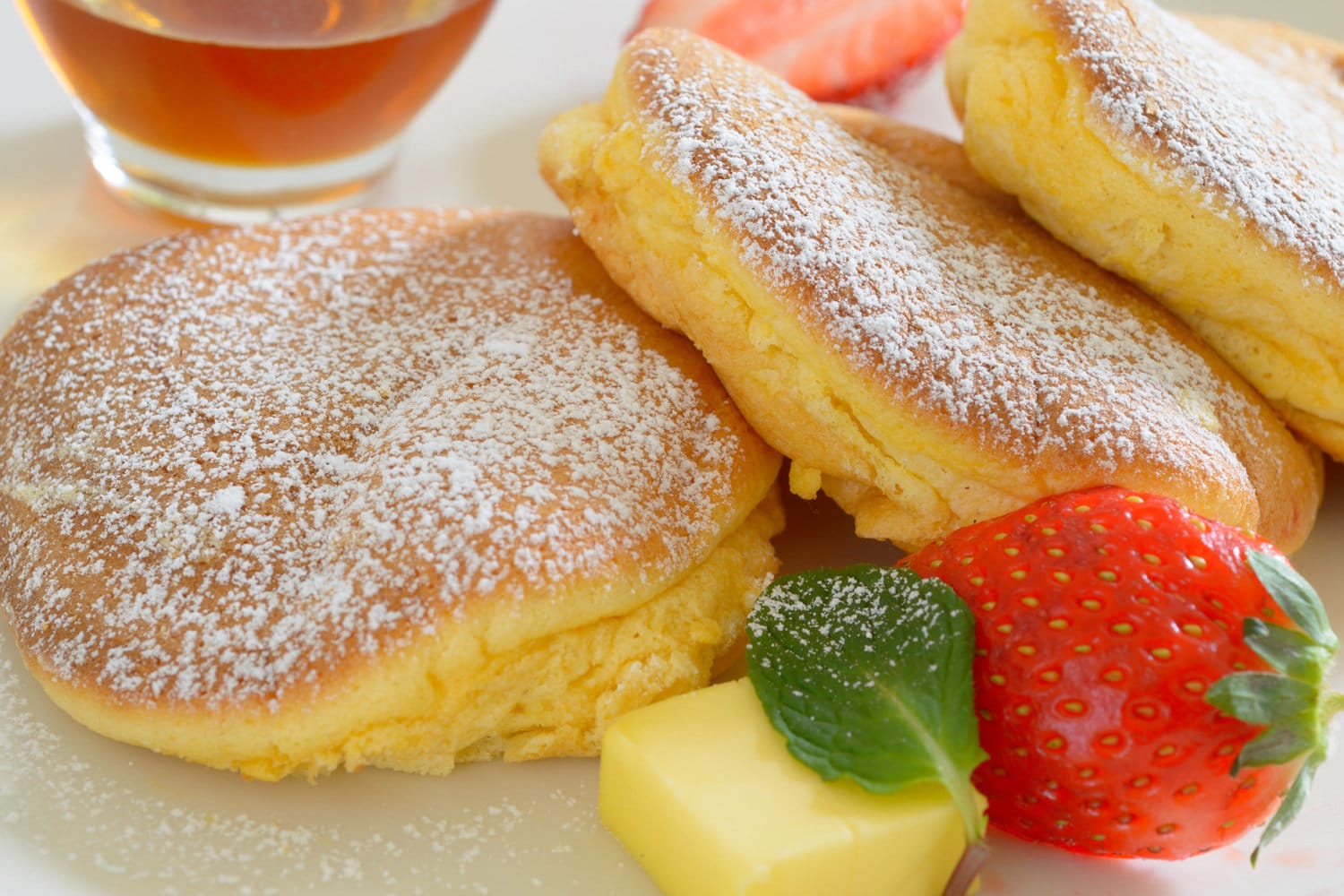
For anyone who hasn't tried a souffle pancake, yours should be very soft, sweet, and almost cloud-like. Since a souffle is fluffy, jiggly, sweet, smooth, and delicious, you want to try and recreate that at home.
Generally, pancakes will already be airy, so think of your souffle pancakes as a level-up from that. While making your breakfast, you'll whip up your egg whites into a glossy thick meringue, which you'll then mix with your batter made with the yolks.
Although this recipe will require eggs, that doesn't mean you should taste them in your final product. When preparing souffle pancakes, the best thing to remember is to follow the recipe and lean towards a sweeter flavoring.
Even if your texture is right, too many eggs or salty flavoring can ruin a souffle breakfast.
Why Is My Souffle Pancake Not Fluffy?
If your souffle pancakes turn out less fluffy than anticipated, this could be due to a couple of things. First, if you don't mix in your egg whites enough (or too much), it's possible to see flatter pancakes.
The meringue in your recipe is what usually affects the final texture/consistency, so make sure to mix it enough, but not to the point it becomes runny.
Furthermore, if your meringue isn't strong enough or has a watery consistency, this will lead to flat souffle pancakes. We recommend using a hand mixer to create a strong, firm meringue for your pancake.
The key here is mixing your eggs well while not using too many. Making the perfect souffle is sometimes easier said than done.
What Is The Difference Between A Souffle Pancake And A Regular Pancake?
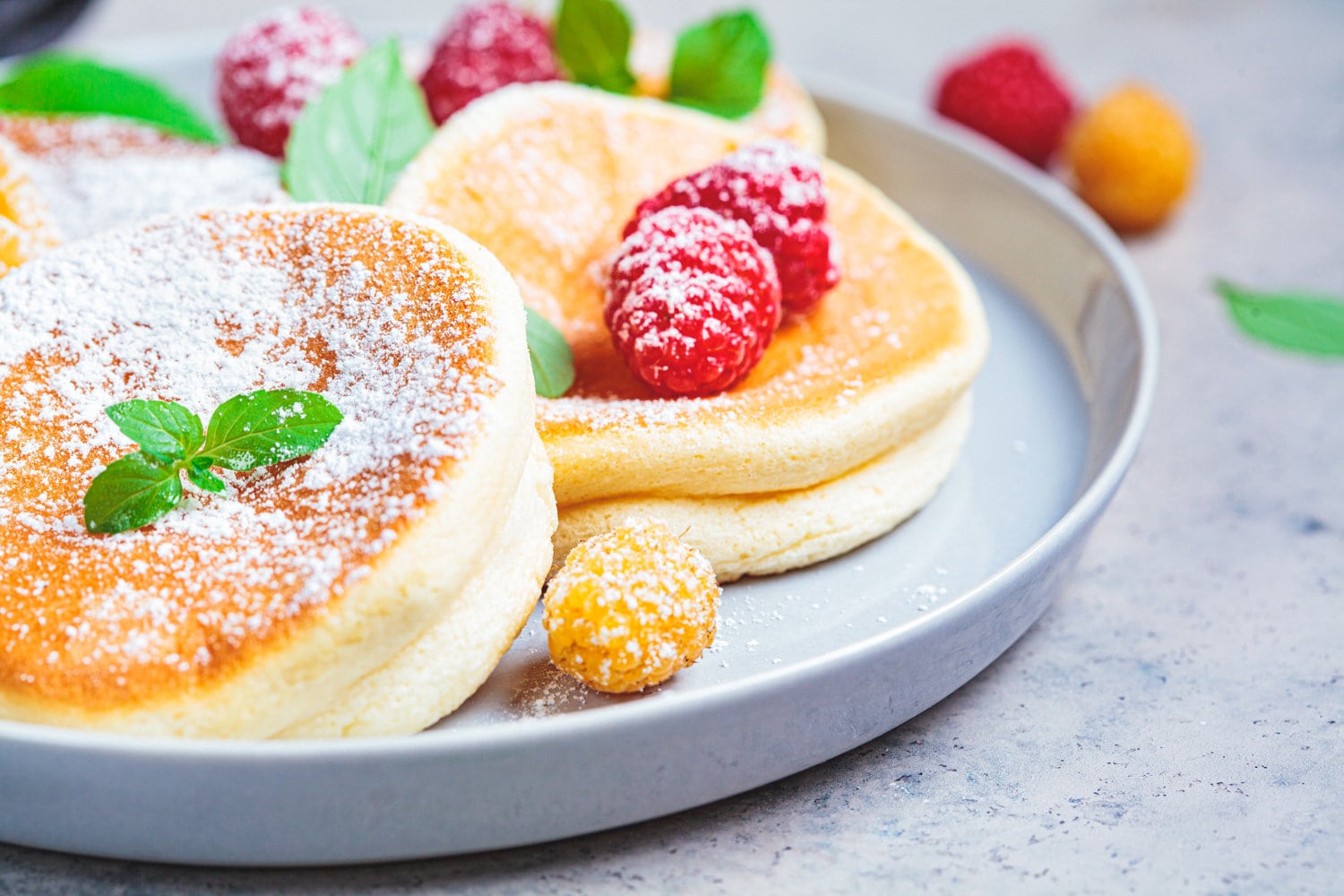
When it comes to the difference between a souffle pancake and a regular one is that souffle pancakes use a smaller amount of flour, and the egg whites are beaten to form a meringue.
You aren't creating a meringue for regular pancakes, and you will need to use more flour. Another critical difference is that regular pancakes aren't nearly as fluffy as souffle options.
When you make souffle pancakes, you also fold the meringue mixture into your other batter. This adds an extra layer of fluffiness, which a traditional pancake won't feature.
Souffle pancakes are also a bit harder to prepare, so in terms of time, you can expect to spend more making your souffle rather than a regular pancake.
However, both taste delicious, so this comes down to your texture/taste preference. You also don't want either of these types of pancakes to taste eggy.
Where Did Souffle Pancakes Originate From?
Despite having various Japanese recipes and names, souffle pancakes originated in Hawaii.
An interesting history about these pancakes is that a chef at Cream Pot, a restaurant in Waikīkī, created souffle pancakes because he didn't like how regular pancakes tasted.
His name is Nathan Tran, and we can all thank him for creating these super yummy pancake alternatives. With that said, some skeptics claim these pancakes came from other chefs and restaurants, but the common agreeance is that they're from Hawaii.
Japanese culture has heavily impacted souffle pancakes, though, which is why they are so popular. Thanks to food photos and social media, souffle pancakes took Asia by storm and have since become popular throughout the United States.
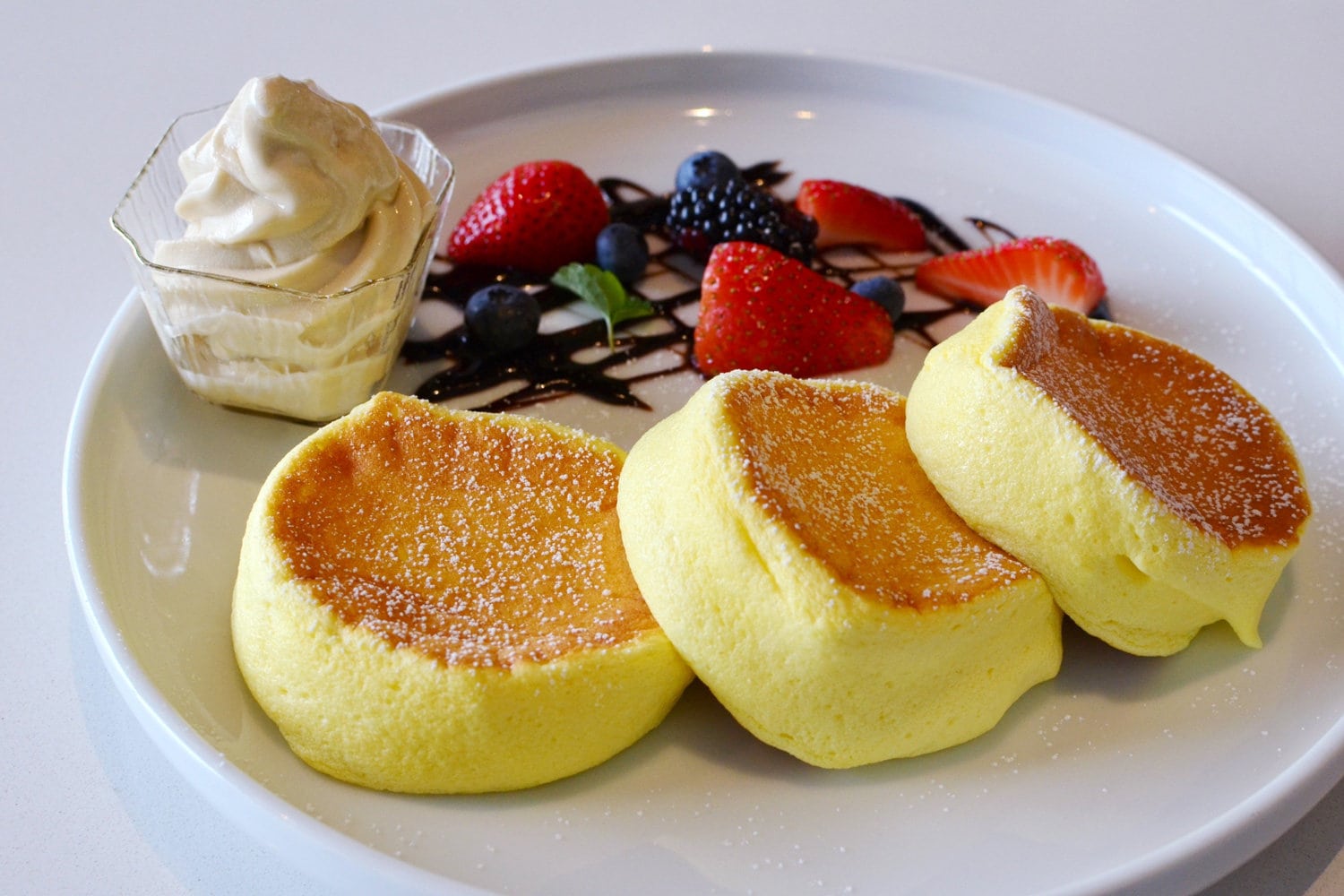
How Do You Make Souffle Pancakes?
Now that you know the history of souffle pancakes, why not try making them? Luckily, this shouldn't be too difficult as long as you follow a recipe and it doesn't require too many complicated ingredients.
First, you'll need the following:
- Two egg yolks
- Four egg whites
- 1/4 cup of all-purpose flour
- One teaspoon of baking powder
- One teaspoon of vanilla extract
- 1/16 teaspoon of kosher salt
- Two tablespoons of whole milk
- One tablespoon of avocado/canola oil
- One teaspoon of cream of tartar
- 1/4 cup of sugar
Making Your Souffle Pancakes
Once you have all the necessary ingredients, you can start by:
- Making your egg yolk mixture (separate your four eggs and add flour, baking powder, vanilla, salt, milk, and oil. Whisk everything until it's smooth and set it to the side.
- Preheat your skillet - heat a large 12-inch nonstick skillet on very low heat.
- Create your meringue - take the egg whites and add your cream of tarter. Use a hand mixer to whisk the two on medium-low speed for 30 seconds.
- Make your batter - scrape roughly 1/2 cup of the meringue into the yolk mixture and gently whisk them together. Add about half of the remaining meringue and fold until the two are combined.
- Cook your pancakes - scoop three evenly sized pancakes onto your skillet, drizzling about one tablespoon of water on the empty space inside your skillet. Cover the skillet with a lid and let your pancakes cook for ten minutes.
- Flip your souffle pancakes - after ten minutes, run an offset spatula/thin spatula under each pancake. Carefully flip all three pancakes and let the other side cook for eight minutes.
- Serve your pancakes - When you have cooked both sides of your souffle pancakes, grab a plate, move them onto it with your spatula, and you're ready to eat!
So, this doesn't require too many ingredients but can be complicated if you don't mix your various items properly. We recommend a hand mixer, which will make preparing the meringue a bit easier.
Hamilton Beach 6-Speed Electric Hand Mixer
This hand mixer comes with a whisk, features easy clean beaters to reduce clogging, has a snap-on storage case, includes seven attachments, uses 275 watts, and is white.
Follow this link to view it on Amazon.
What Happens If You Overcook Souffle Pancakes?
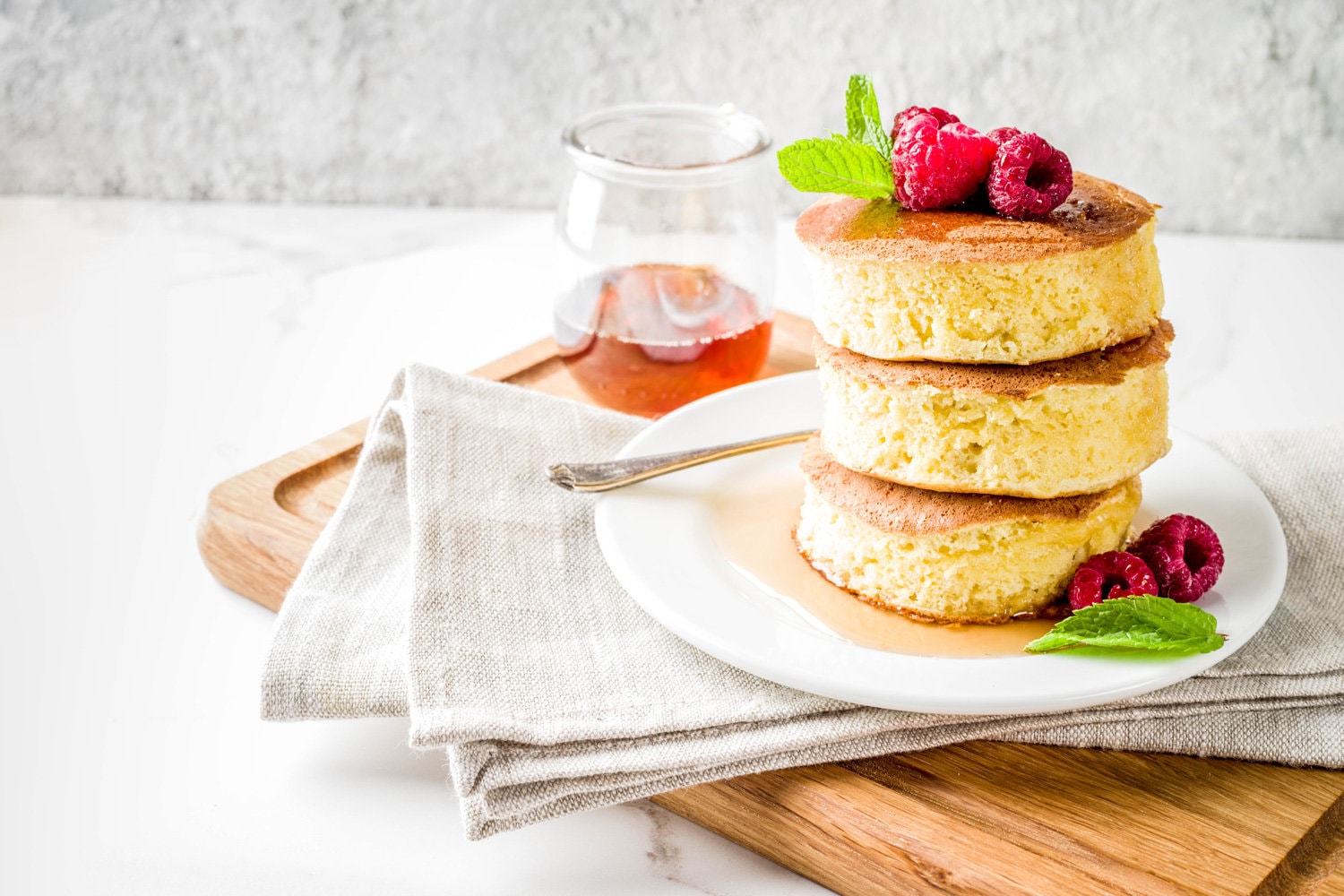
If you overcook a souffle pancake, expect it to be less fluffy and tasty. As we said above, this process shouldn't be more than 20 minutes, so cooking your pancakes for much longer won't be beneficial.
Generally, overcooked souffle pancakes will be flatter/runnier than properly made ones. So, the first thing you will notice is a less-than-ideal taste and consistency.
In addition, you might even have burnt souffle pancakes if you leave them on the stove too long. Like regular pancakes, it's common to see burning along the bottom of your breakfast if you don't follow the correct timeline.
To Tie Everything Together
Whether you want to try making souffle pancakes for the first time or regularly make them, it's always good to understand the ingredients and their ratios. We found that your pancakes should not taste like eggs or be super "eggy" in their texture.
One of the reasons this happens is that you don't correctly mix your egg whites and yolks into their respective ingredients, so make sure to whisk everything well.
Furthermore, souffle pancakes should have a fluffy, sweet taste, so feel free to add more vanilla to your meringue or batter if it tastes eggy.
Made it to the end? Check out these helpful related kitchen articles below!
How To Keep Pancakes From Sticking To Stainless Steel Pan
Can You Make Pancakes With Self Rising Flour?
How To Keep Pancakes From Sticking To The Pan


